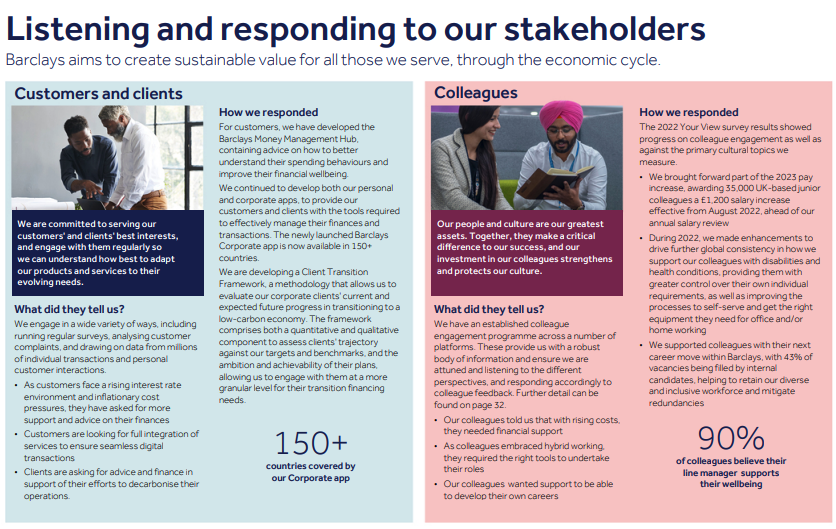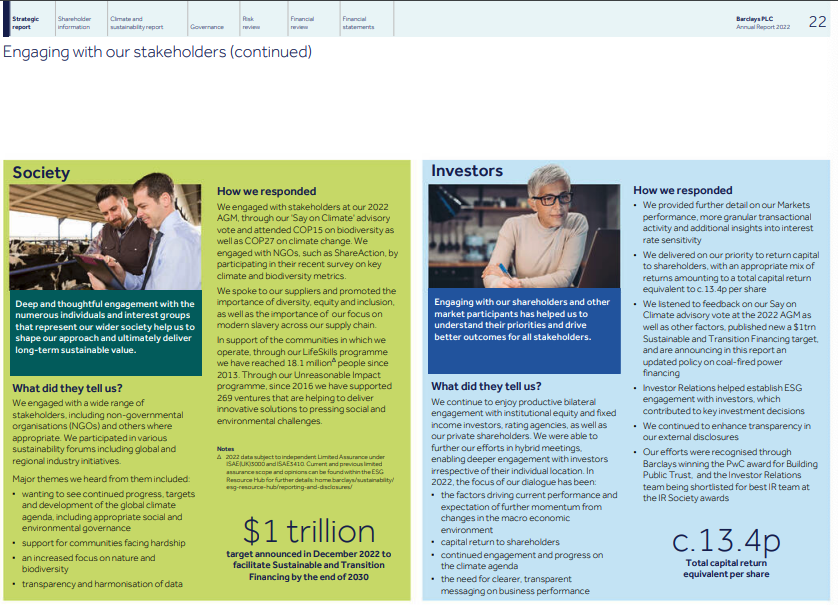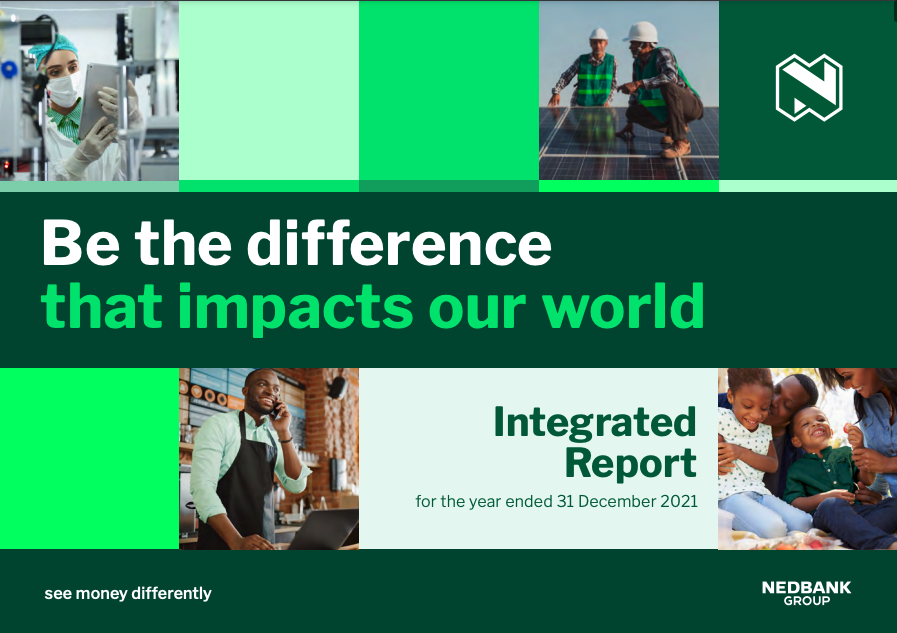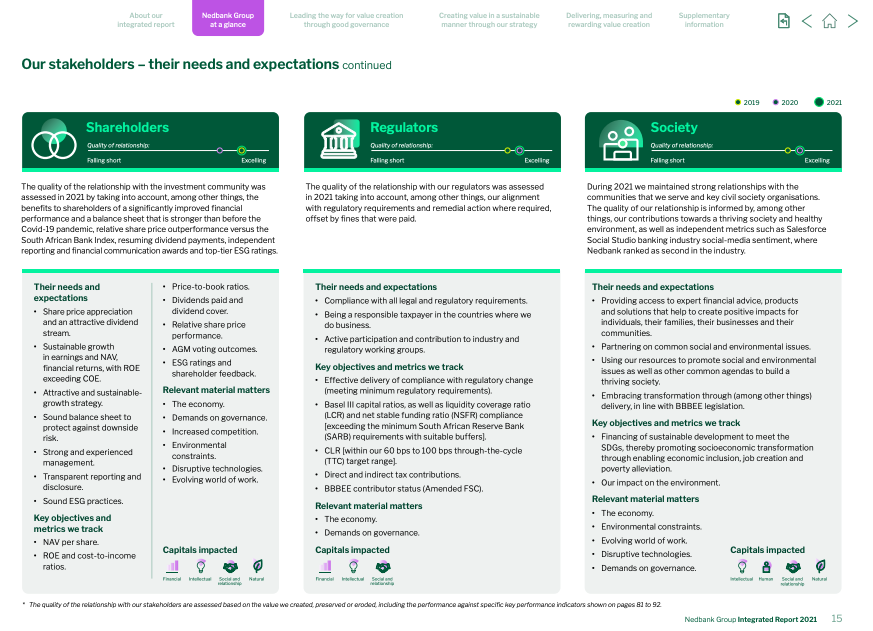Stakeholders are individuals, groups, or organizations that may affect or be affected, either positively or negatively, by a company’s activities and decisions. Stakeholders may include workers, customers, regulators, locally affected communities or individuals and their formal and informal representatives, national or local government authorities, civil society organizations and groups with special interests, local and international non-governmental organizations, contracted workers, primary supply chain workers, neighboring projects, the academic community, or other businesses.
Stakeholders have an interest in or influence the company’s sustainability performance and should be considered when reporting.
What is Stakeholder Engagement?
Stakeholder engagement is an umbrella term encompassing a range of business activities and interactions. Stakeholder engagement can be divided into eight components as per the IFC’s Stakeholder Engagement Good Practice Handbook:
- Stakeholder Identification and Analysis;
- Information Disclosure;
- Stakeholder Consultation;
- Negotiation and Partnerships;
- Grievance Management;
- Stakeholder Involvement;
- Reporting to Stakeholders;
- Management Functions.
A sound engagement strategy is grounded in understanding your stakeholders. Stakeholder interests and concerns gathered through stakeholder engagement are important inputs to the strategy-setting process and identifying material risks and opportunities to the company. It is important to engage with stakeholders continually as these relationships are dynamic. For example, customers’ preferences can change, and companies that understand this can develop products and services in line with changing preferences.
Ongoing stakeholder engagement should be incorporated into business activities, and the board of directors should be kept informed of key aspects of stakeholder engagement.
Good International Practice: Ongoing Stakeholder Dialogue
It is particularly important for companies to have open communication with its stakeholders and a mechanism to coordinate the interests of various stakeholders interests. Open communication is not just a one-way dissemination of information from one part of the company to another, or from the company to external actors, most notably investors; it is an ongoing stakeholder dialogue and a process of “mutual” learning, which supports an open and transparent company culture of involvement, engagement, and connectivity both inside and outside the organization.
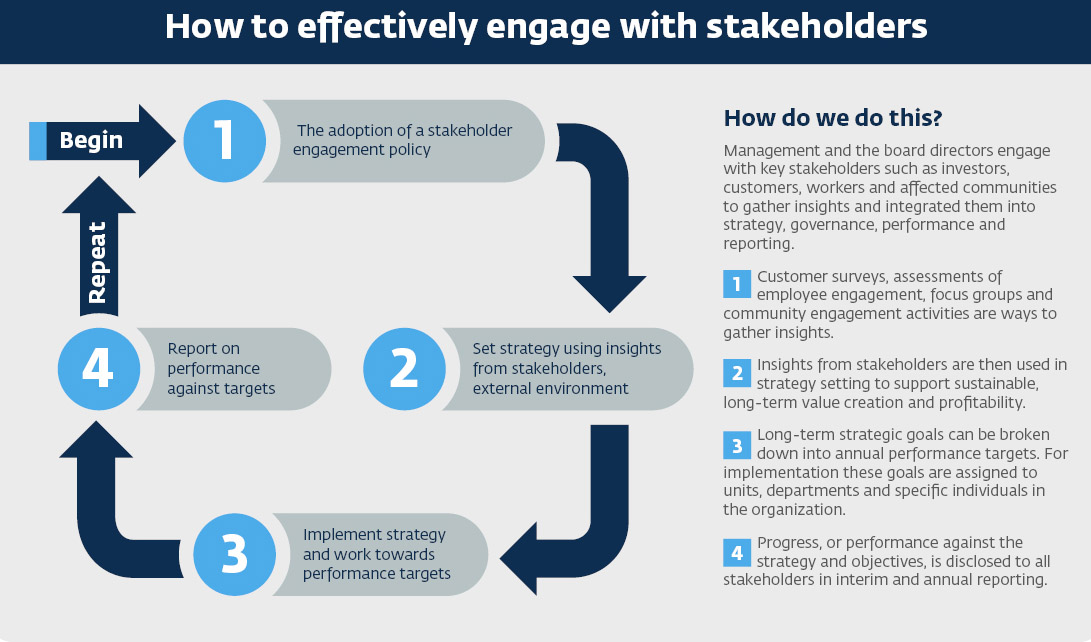
Why Disclose Stakeholder Engagement?
Disclosures on stakeholder engagement help assess whether stakeholders’ concerns and interests are factored into the strategy and how much certain stakeholders (such as workers, customers, regulators, locally affected communities, civil society organizations, local and international non-governmental organizations, contracted workers, primary supply chain workers) contribute to the company’s success. Understanding the perspectives of key stakeholders can highlight market trends and provide valuable insight to assess the organization’s risks and opportunities, including material sustainability issues.
The European Sustainability Reporting Standards: ESRS 2 General Disclosures includes disclosure on strategy as one of the four pillars for sustainability disclosure (1. Governance, 2. Strategy, 3. Impact, Risk and Opportunity Management, and 4. Metrics and targets). This strategy section of this platform is aligned with the main recommendations under the strategy pillar of the forthcoming draft. Please find below an excerpt from the standard for your reference.
-
European Sustainability Reporting Standards ESRS 1 – General Requirements
3.1 Stakeholders and their relevance to the materiality assessment process
22. Stakeholders are those who can affect or be affected by the undertaking. There are two main groups of stakeholders:
(a) affected stakeholders: individuals or groups whose interests are affected or could be affected – positively or negatively – by the undertaking’s activities and its direct and indirect business relationships across its value chain; and(b) users of sustainability statements: primary users of general-purpose financial reporting (existing and potential investors, lenders and other creditors, including asset managers, credit institutions, insurance undertakings), and other users of sustainability statements, including the undertaking’s business partners, trade unions and social partners, civil society and non-governmental organisations, governments, analysts and academics.
23. Some, but not all, stakeholders may belong to both groups referred to in paragraph 22.
24. Engagement with affected stakeholders is central to the undertaking’s on-going due diligence process (see chapter 4 Due diligence) and sustainability materiality assessment. This includes its processes to identify and assess actual and potential negative impacts, which then inform the assessment process to identify the material impacts for the purposes of sustainability reporting (see section 3.4 of this Standard).
Appendix A: Application Requirements
This appendix is an integral part of ESRS 1 and has the same authority as the other parts of the Standard.Double materiality
Stakeholders and their relevance to the materiality assessment process
AR 6. In addition to the categories of stakeholder listed in paragraph 22, common categories of stakeholders are: employees and other workers, suppliers, consumers, customers, end- users, local communities and persons in vulnerable situations, and public authorities, including regulators, supervisors and central banks.AR 7. Nature may be considered as a silent stakeholder. In this case, ecological data and data on the conservation of species may support the undertaking’s materiality assessment.
AR 8. Materiality assessment is informed by dialogue with affected stakeholders. The undertaking may engage with affected stakeholders or their representatives (such as employees or trade unions), along with users of sustainability reporting and other experts, to provide inputs or feedback on its conclusions regarding its material impacts, risks and opportunities.
Source: European Sustainability Reporting Standards: ESRS 1 General Requirements
-
European Sustainability Reporting Standards: ESRS 2 General Disclosures
Disclosure Requirement SBM-2 – Interests and views of stakeholders 43. The undertaking shall disclose how the interests and views of its stakeholders are taken into account by the undertaking’s strategy and business model.
44. The objective of this Disclosure Requirement is to provide an understanding of how stakeholders’ interests and views inform the undertaking’s strategy and business model.
45. The undertaking shall disclose a summarised description of: (a) its stakeholder engagement, including:
i. the undertaking’s key stakeholders;
ii. whether engagement with them occurs and for which categories of stakeholders;
iii. how it is organised;
iv. its purpose; and
v. how its outcome is taken into account by the undertaking;
(b) the undertaking’s understanding of the interests and views of its key stakeholders as they relate to the undertaking’s strategy and business model, to the extent that these were analysed during the undertaking’s due diligence process and/or materiality assessment process (see Disclosure Requirement IRO-1 of this Standard);
(c) where applicable, amendments to its strategy and/or business model, including:
i. how the undertaking has amended or expects to amend its strategy and/or business model to address the interests and views of its stakeholders;
ii. any further steps that are being planned and in what timeline; and
iii. whether these steps are likely to modify the relationship with and views of stakeholders; and
(d) whether and how the administrative, management and supervisory bodies are informed about the views and interests of affected stakeholders with regard to the undertaking’s sustainability-related impacts.
Source: ESRS 2 General Disclosures.
Stakeholder Mapping, Identification and Relations
The company’s annual report should define the company’s key stakeholder groups and provide some insight into the company’s stakeholder relations.
Define key stakeholder groups that affect or are affected by the company’s activities and decision. Describe and your company’s stakeholder relations with them and how the outcome is taken into consideration.
Stakeholder Interests and Concerns
Describe the interests and concerns of stakeholders analyzed during the company’ materiality assessment.
Process and Outcome
Report on the process of stakeholder engagement and its outcomes. What insights has the company received from stakeholders? How were they used?
Integration in Strategy
Describe how stakeholder engagement outcomes influence the strategy and strategic objectives to address stakeholders interests and views. Communication to Management and the Board Describe if and how the management and governing bodies are informed about the affected stakeholders interests and concerns.
Reporting on the Governance of Shareholder Engagement
Annual reports should address the governance and board oversight of stakeholder engagement, including stakeholder mapping, engagement policy, and grievance mechanisms for workers and affected communities.
To learn more, see Governance of Stakeholder Engagement in the Governance section of the Toolkit.

